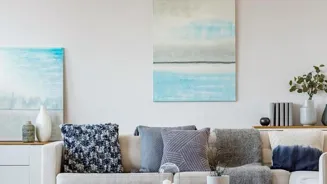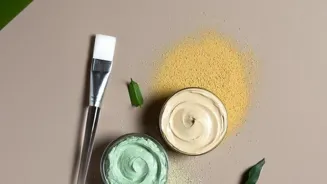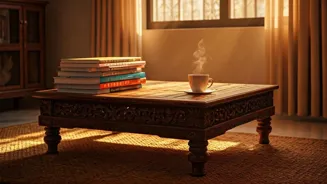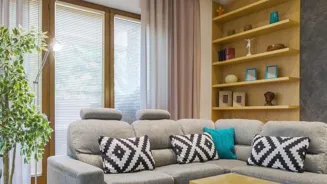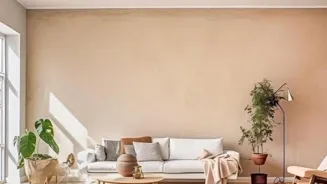Discover how to transform your home into a minimalist haven! Learn 5 key steps to achieve a serene space
Mumbai: Are you feeling overwhelmed by clutter? Does your home feel more like a storage unit than
a sanctuary? Well, fret not! In this fast-paced world, many Indians are embracing minimalism – not just as a lifestyle, but also as a design philosophy for their homes.
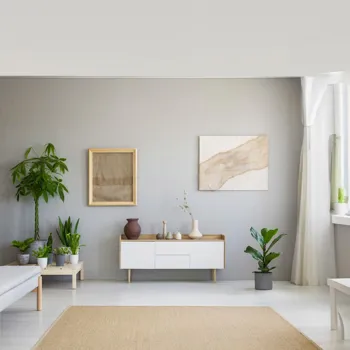
Creating a minimalist home decor aesthetic isn't about sacrificing comfort or personality. It's about curating a space that is functional, beautiful, and reflects your true self without the excess. It's about living intentionally with only the things you truly need and love.
Ready to ditch the unnecessary and embrace a calmer, more serene living space? Here are five simple steps to get you started on your minimalist decor journey!
Declutter Ruthlessly: The First Step to Freedom
Okay, folks, this is where the real work begins! Before you even think about paint colors or new furniture, you need to declutter. And we mean really declutter. Go room by room, cupboard by cupboard, and drawer by drawer. Hold each item in your hand and ask yourself some tough questions.
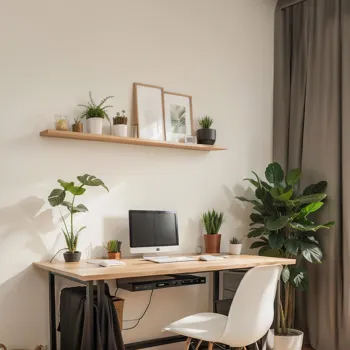
Have I used this in the last year? Does it bring me joy or serve a practical purpose? If the answer to both is no, it's time to say goodbye. Be honest with yourself. Don't hold onto things for sentimental reasons if they're just collecting dust.
Remember, minimalism isn't about deprivation; it's about prioritizing what truly matters. Donate clothes you haven't worn in ages to a local charity. Sell furniture or appliances you no longer need online. Recycle old newspapers and magazines. Get rid of anything broken or damaged beyond repair.
The more you declutter, the more space you'll create, both physically and mentally. And that, my friends, is the foundation of a minimalist home. You'll be surprised at how much lighter and brighter your home feels after just one decluttering session.
Once you've decluttered, invest in some smart storage solutions to keep your space organized and prevent future clutter buildup.
Embrace Neutral Colors: The Foundation of Calm
Now that you've decluttered, it's time to think about colors. In minimalist design, neutral colors are your best friends. Think whites, creams, grays, beiges, and other muted tones. These colors create a sense of calm, openness, and tranquility.

A neutral palette also allows you to showcase textures and subtle details without overwhelming the space. Don't be afraid to mix and match different shades of neutrals to add depth and interest. For example, you could pair a warm beige wall with crisp white trim and light gray furniture.
While neutral colors are the foundation, you can still add pops of color with accessories like cushions, throws, or artwork. But remember to keep it minimal! A few well-chosen accent pieces will go a long way in adding personality without disrupting the overall minimalist aesthetic.
When choosing paint colors or furniture fabrics, consider natural materials like linen, cotton, or wool. These materials add texture and warmth to the space while staying true to the minimalist principles.
So, embrace the power of neutrals and create a calming and sophisticated backdrop for your minimalist home. Neutrals create a cohesive look!
Invest in Multi-Functional Furniture: Smart and Stylish!
In a minimalist home, every piece of furniture should serve a purpose. And even better, if it can serve multiple purposes! Look for furniture that is both functional and stylish. Think storage ottomans, sofa beds, coffee tables with hidden compartments, and wall-mounted shelves.
Multi-functional furniture helps you maximize space and minimize clutter. It also adds a sense of practicality and efficiency to your home. When choosing furniture, consider the scale of your rooms. Avoid large, bulky pieces that will overwhelm the space.
Opt for sleek, streamlined designs that are both comfortable and visually appealing. Choose quality over quantity. Instead of buying several cheap pieces of furniture, invest in a few well-made items that will last for years to come.
Remember, minimalism is about surrounding yourself with things you truly love and need. So, choose furniture that reflects your personal style and enhances your daily life. Opting for pieces that can serve multiple roles is good. It ensures you're maximizing your living space.
These could be anything from a bed with storage, to a shelf that folds into a table.
Focus on Natural Light: Let the Sunshine In!
Light is a key element in minimalist design. Natural light, in particular, can transform a space, making it feel brighter, more open, and more inviting. Maximize natural light by keeping your windows clean and free of obstructions.
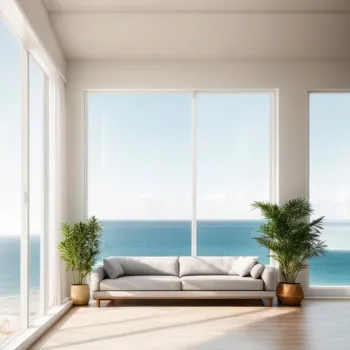
Use sheer curtains or blinds that allow light to filter through while still providing privacy. Avoid heavy drapes or blinds that block out the light. If you don't have a lot of natural light, you can supplement it with artificial lighting.
Use a combination of ambient, task, and accent lighting to create a warm and inviting atmosphere. Choose light fixtures that are simple, elegant, and functional. Avoid overly ornate or decorative fixtures that will detract from the minimalist aesthetic.
Mirrors can also be used to reflect light and make a room feel larger. Place a large mirror on a wall opposite a window to maximize the amount of light in the room. Remember, good lighting is essential for creating a comfortable and inviting space.
So, make the most of natural light and use artificial lighting to enhance the beauty of your minimalist home. If natural light is limited, use lamps well.
Accessorize Sparingly: Less is More!
Finally, let's talk about accessories. In minimalist design, less is definitely more. Choose a few carefully selected accessories that reflect your personality and add visual interest to the space. Avoid cluttering your shelves and surfaces with knick-knacks and trinkets.
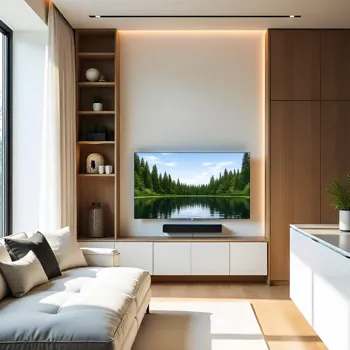
A few well-chosen pieces of art, a vase of flowers, or a collection of books can add warmth and personality without overwhelming the space. When choosing accessories, consider the color, texture, and scale of the items.
Choose items that complement the overall minimalist aesthetic and enhance the existing décor. Don't be afraid to leave some surfaces empty. Negative space is an important element in minimalist design. It allows the eye to rest and creates a sense of calm and serenity.
Rotate your accessories seasonally to keep your space fresh and interesting. Store the rest of your accessories in a closet or storage container. Avoid displaying everything at once. Remember, accessories are meant to enhance your space, not clutter it. So, choose wisely and accessorize sparingly.
Accessorise as little as possible, always keeping the look of the space in mind.
Now you are armed with a plan to turn your home into a minimalist's dream. So, get ready to make changes!
